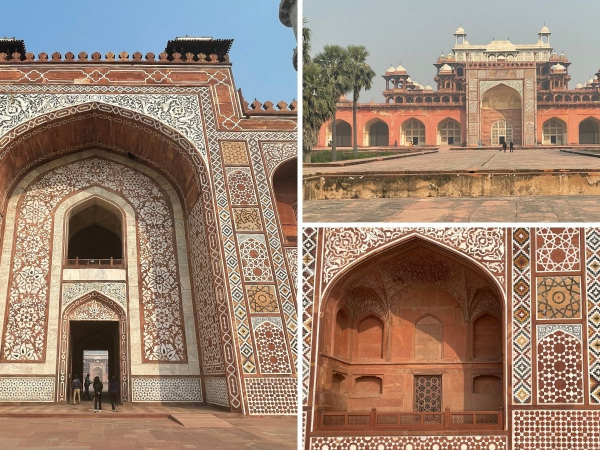The Geometry of Empire: Exploring the Mughal Design Language in Sikandra
Sikandra - The Portal to Eternity
The Geometry of Empire is a five-part journey through the world of Mughal architecture from Delhi to Agra and Fatehpur Sikri. Each course explores a different building type within this remarkable era mausoleums, forts, palaces, and dargahs (shrines) revealing how geometry shaped every aspect of their design.
Students will learn how the Mughals used geometry not only as a decorative tool but also as a way of expressing order, harmony, and proportion. Through analytical drawings and historical study, the series connects art, mathematics, and built heritage.
By the end of the series, students will have developed a deep understanding of how geometry formed the foundation of Mughal design, how it was translated into stone and craft, and how it continues to influence the visual language of India today.
This four-week course explores the tomb of Emperor Akbar at Sikandra, a serene complex on the outskirts of Agra where architecture, geometry, and nature come together in perfect balance. Built in red sandstone and inlaid with marble, the complex is surrounded by sprawling gardens where peacocks and deer still wander, a place designed for reflection on life, death, and the infinite.
Through the study of the grand portal and surrounding façade, students will observe how geometry transforms from royal and religious contexts into the quiet majesty of the mausoleum. The course highlights how Mughal designers used geometry not only as ornament but as a metaphor for the eternal, etching the emperor’s memory into the language of pattern.
Students will analyse the unique geometric systems seen on the portal which include 4-, 5-, and 6-fold symmetries. We will also study the proportions of the archway as an architectural frame. Through drawing and analysis, students will explore how geometry shapes meaning, emotion, and remembrance in the final resting place of one of India’s greatest rulers.
Booking Options
Sikandra - The Portal to Eternity
The Geometry of Empire is a five-part journey through the world of Mughal architecture from Delhi to Agra and Fatehpur Sikri. Each course explores a different building type within this remarkable era mausoleums, forts, palaces, and dargahs (shrines) revealing how geometry shaped every aspect of their design.
Students will learn how the Mughals used geometry not only as a decorative tool but also as a way of expressing order, harmony, and proportion. Through analytical drawings and historical study, the series connects art, mathematics, and built heritage.
By the end of the series, students will have developed a deep understanding of how geometry formed the foundation of Mughal design, how it was translated into stone and craft, and how it continues to influence the visual language of India today.
This four-week course explores the tomb of Emperor Akbar at Sikandra, a serene complex on the outskirts of Agra where architecture, geometry, and nature come together in perfect balance. Built in red sandstone and inlaid with marble, the complex is surrounded by sprawling gardens where peacocks and deer still wander, a place designed for reflection on life, death, and the infinite.
Through the study of the grand portal and surrounding façade, students will observe how geometry transforms from royal and religious contexts into the quiet majesty of the mausoleum. The course highlights how Mughal designers used geometry not only as ornament but as a metaphor for the eternal, etching the emperor’s memory into the language of pattern.
Students will analyse the unique geometric systems seen on the portal which include 4-, 5-, and 6-fold symmetries. We will also study the proportions of the archway as an architectural frame. Through drawing and analysis, students will explore how geometry shapes meaning, emotion, and remembrance in the final resting place of one of India’s greatest rulers.


